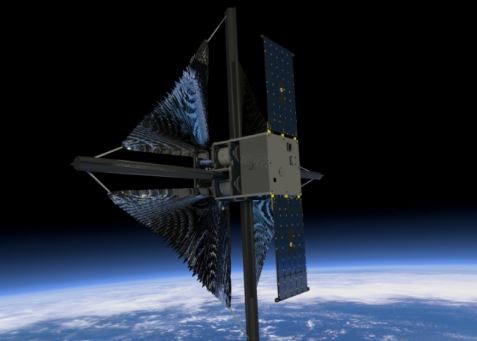NASA’s Advanced Composite Solar Sail System Mission (ACS3)
On April 24, 2024, NASA has launched the Advanced Composite Solar Sail System (ACS3), marking an important moment in the utilization of solar power for space propulsion. A solar-powered spacecraft was deployed aboard Rocket Lab’s Electron rocket from New Zealand. This spacecraft, powered by sunlight, aims to test the efficacy and potential of solar sails in space transportation.
Understanding Solar Sail Technology
Solar sail technology harnesses the momentum of photons emitted by the sun, using large, reflective surfaces to propel spacecraft without traditional fuel. This technology leverages the constant outward pressure exerted by sunlight, similar to how wind sails capture the wind to propel sailboats. The Advanced Composite Solar Sail System spacecraft, approximately 80 square meters in size post-deployment, utilizes this innovative propulsion mechanism.
Design and Mechanism
The mission’s core component is an oven-sized CubeSat, which, after being lifted into orbit, deploys a solar sail. The spacecraft performs a series of manoeuvres to adjust its orbit using only the pressure of sunlight. The versatility of solar sail technology offers significant advantages for future space missions, potentially enabling manoeuvres and adjustments without relying on conventional fuel sources.
Implications for Space Exploration
The success of NASA’s solar sail mission could revolutionize space travel. Traditional spacecraft rely heavily on chemical propulsion systems, which require significant amounts of fuel. This dependency limits the scope and duration of missions due to the weight and volume constraints imposed by the fuel. In contrast, solar sails offer a lightweight alternative that could facilitate longer and potentially interstellar missions leveraging the unlimited solar energy.
Advantages Over Traditional Systems
The use of solar sails could dramatically reduce the cost and complexity of space missions. By eliminating the need for fuel, spacecraft can be lighter and possibly larger, only constrained by the size of the solar sails they can deploy. Furthermore, the ability to manoeuvre a spacecraft over indefinitely long periods using sunlight could open up new possibilities in the exploration of more distant astronomical objects.
Challenges and Future Prospects
While solar sail technology presents numerous opportunities, it also faces specific challenges, particularly concerning the size and durability of the sails and the precision required in spacecraft orientation and control. Ongoing advancements and the results from NASA’s solar sail mission will address these challenges, refining the technology for future applications.
Month: Current Affairs - April, 2024
Category: Science & Technology Current Affairs







